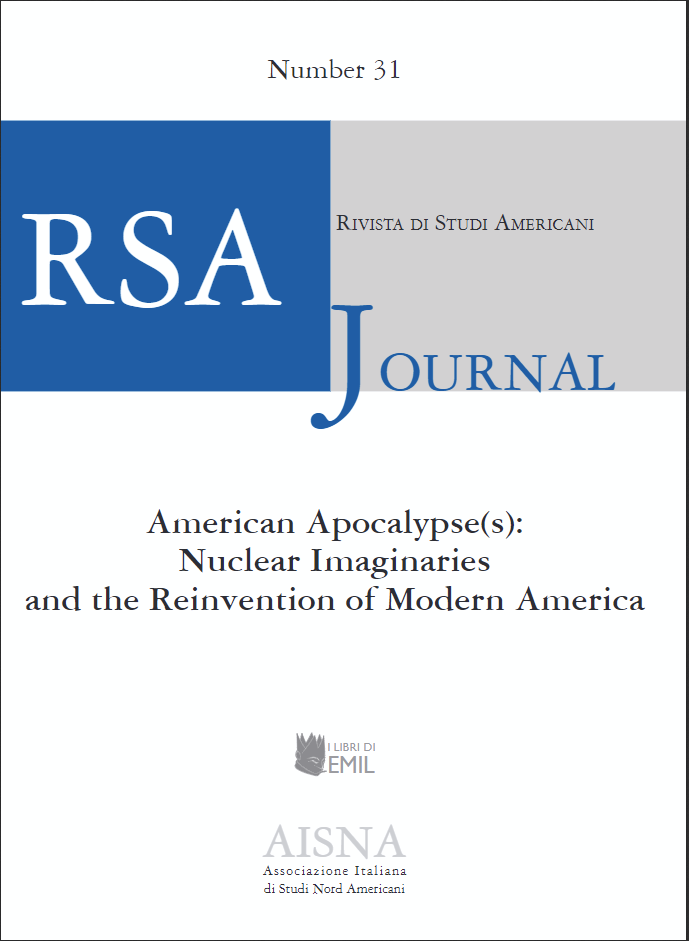Apocalyptic Allegories
Resisting Strategic Nuclear Imaginaries through Critical Literacy
DOI:
https://doi.org/10.13135/1592-4467/8496Keywords:
nuclear, apocalyptic, literacy, American nuclear cultureAbstract
Eschatological expressions underwent an epistemic shift with the Trinity tests on July 16, 1945 from an imaginative practice of predicting futurity to a cataclysmic vision of complete annihilation. Motifs of literacy, while seldom discussed, share a self-reflexive relation with nuclearization and cultural productions of the apocalypse, since the specialized nature of nuclear technology transforms nuclear discourses into signifiers of power: a form of cultural capital that emerges from and simultaneously legitimizes nuclear weapons. This intervention emphasizes how the epistemic violence of strategic nuclear imaginaries – employed through the constant anxiety of an anticipated nuclear catastrophe – can be countered through a critical literacy opposed to both martial ideologies as well as the instrumentalization of weaponized nuclear technology. Considering the current turbulence of an always already global nuclear landscape, this article examines two contemporary cinematic renderings of post-nuclear apocalyptic spaces, The Book of Eli (2010) and The Matrix (1999), to argue that any act of culturally representing/articulating the nuclear disaster is always an act of tangible recovery. In conclusion, I note that by uncovering the terrible realities of nuclear conflict and the dehumanization implicit in sophisticated techno-strategic paradigms, these artifacts from American nuclear culture, which are also coextensive with nuclear countercultures everywhere, show the emancipatory possibilities of humane community-oriented critical literacies.
Downloads
Published
Issue
Section
License
RSAJournal will apply a CC BY 4.0 license to all its contributions starting with issue 37 (2026). Previous issues are licensed under a CC BY-NC-ND licence.





